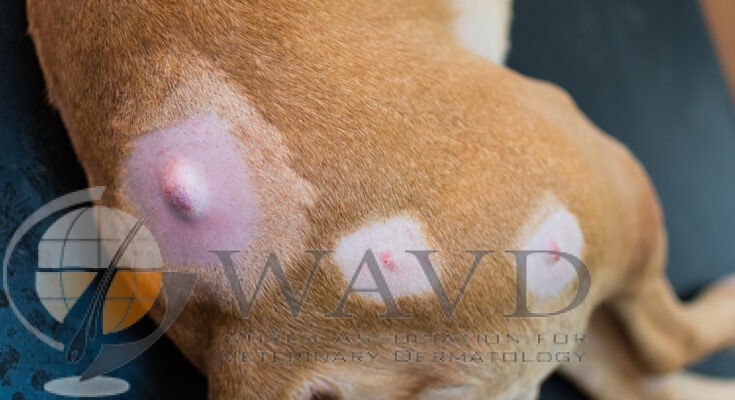While lumps and bumps are more common in older dogs, younger dogs can get them too. Most lumps and bumps are benign (non-cancerous), but some of them can be malignant (cancerous). The older your dog is, the higher their chance of getting malignant lumps. The good news is that early detection and treatment of cancerous lumps can increase the chances of a cure.
Benign (non-cancerous) lumps and bumps
Benign lumps and bumps lack the ability to invade other tissues and spread to sites beyond where they are present. The vast majority cause little concern, however those that continue to grow can cause problems, like restricting movement or breathing because of the lump’s size, or your dog keeps scratching them because they’re irritating. If benign lumps are causing problems, removal should be considered.
Lipomas (fatty lumps)
Lipomas are the most common benign mass dogs can get; they’re often found under the skin of older dogs, and are more common in obese dogs. They tend to be round, soft tumours of fat cells that grow very slowly and rarely spread, so it can take up to six months before you see any change. Lipomas can be easily diagnosed with FNA.
If they become very big or hinder movement (e.g. growing behind a leg or in the armpits), your vet might recommend removal.
Abscesses
Abscesses are swollen lumps that contain an accumulation of pus under the skin caused by an infectious agent. They will generally need to be drained under sedation and copiously flushed with a clean antibacterial solution. In some cases, your vet will prescribe antibiotics if they deem it necessary.




